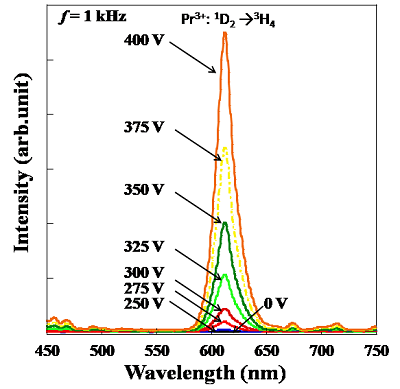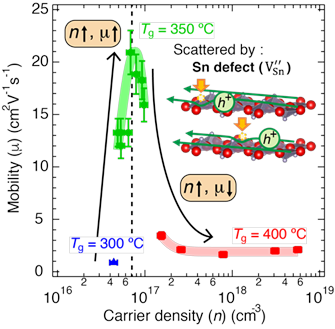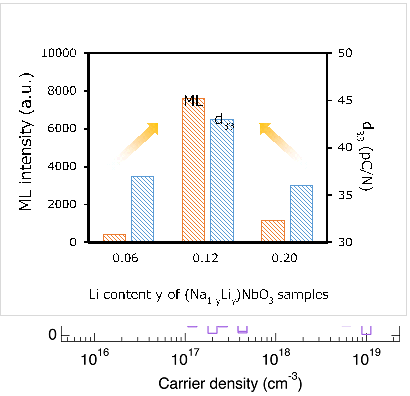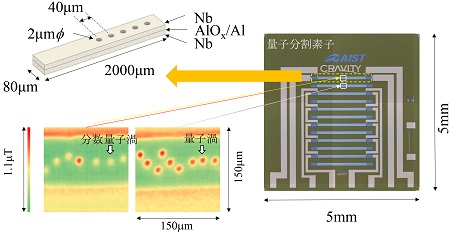Oxide Electronics and Materials Group
Group Outline and Primary Goal
We are working on the development of materials, the elucidation of the physical properties' mechanism, and the establishment of physical property control methods for metal oxides, that will lead to the creation of innovative functional devices.
In particular, we focus on the research project "Exploration of oxide and ionic semiconductor materials and development of elemental technologies for thin-film devices", aiming at realization of energy-saving and highly functional devices that exceed the limits of existing technology.
Key Themes of Research
- Development of oxide semiconductors and analogous ionic materials, and their device realization
- Development of basic technology for multilayer ceramic capacitors using ferroelectric nanoparticle materials
- Development of lead-free piezoelectric ceramics and related devices
- Subdividing a quantum as a new quantum technology

Electroluminescence using phosphor nanoparticle oxides. It eliminates the need
for high-temperature heat treatment, therefore it has merits in terms of shortening processes,
reducing manufacturing costs, and increasing the area.

Low-temperature growth of p-type oxide semiconductor
thin films using a high-power laser. Precise tailoring of both carrier density and mobility, which is
dominated by the impurity scattering, is achieved.

Development of Multi-piezo material that exhibits both piezoluminescence and piezoelectricity. Piezoluminescence is a form of mechanoluminescence (ML) during the elastic deformation. ML intensity increases with piezoelectric constant d33, indicating that piezoluminescence correlates closely with piezoelectricity in the Multi-piezo materials.

Successful generation of fractional flux quanta. The world's first successful direct observation of "fractional quantum vortex image as a phenomenon unique to two-component superconductivity". Zero electrical resistance, Meissner effect, and magnetic flux quantization are the three major superconducting properties governing from basic to application of superconductivity. However, fractional vortices deviate from those principles. We expect to open the way to quantum memory beyond the quantum limit. The generated mechanism of fractional flux quanta in the Josephson-coupled multicomponent superconductivity was discovered by AIST in 2001, and has been experimentally verified over the past 18 years. (Figure, upper left: Schematic diagram of the device; right, element subdividing a quantum; lower left, magnetic flux image of fractional vortex. Usual vortex image is also shown for comparison.)

